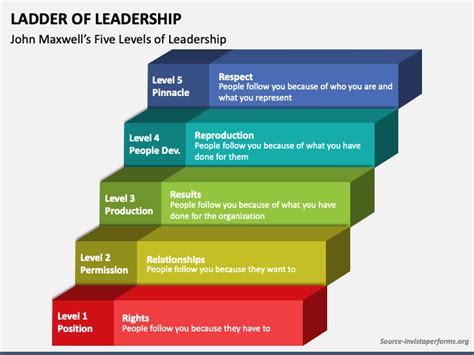Introduction

Leadership is a demanding and multifaceted role that requires a unique set of skills, knowledge, and experience. To effectively guide and inspire their teams, leaders must continuously strive to improve and evolve. One essential tool for leadership development is the ladder, a structured framework that provides a roadmap for personal and professional growth.
The Importance of Ladders for Leaders
Ladders play a crucial role in the development of successful leaders for several reasons:
- Define clear goals and objectives: Ladders outline specific milestones and competencies that leaders must achieve to progress in their careers. This clarity of purpose provides direction and motivation, ensuring that leaders focus their efforts on the most impactful areas.
- Provide a sense of accomplishment: As leaders climb the ladder, they experience a sense of progress and achievement. This recognition reinforces their efforts and builds confidence, fueling their continued growth.
- Foster continuous learning: Ladders require leaders to engage in ongoing learning and development. They identify the skills and knowledge gaps that need to be addressed, promoting personal and professional improvement.
- Create a pathway for advancement: Ladders establish a structured path for leaders to advance their careers within an organization. By meeting the requirements of each level, leaders can earn promotions and assume positions with greater responsibility and authority.
Research and Statistics
According to a study conducted by the Center for Creative Leadership, organizations that invest in leadership development outperform their competitors in terms of financial performance, customer satisfaction, and employee engagement. The study also found that leaders who participate in structured development programs are more likely to be promoted, have higher job satisfaction, and display improved leadership behaviors.
Elements of a Ladder for Leaders
Effective ladders for leaders typically consist of the following elements:
- Foundation: The starting point of the ladder, representing the basic competencies and knowledge required to enter a leadership role.
- Rungs: The individual steps that leaders must take to progress through the ladder. Each rung represents a specific set of skills, abilities, and experiences that must be developed.
- Top Rung: The highest level of the ladder, representing the ultimate goal of leadership development. This rung typically requires the mastery of advanced leadership concepts and the ability to influence and inspire others on a large scale.
Common Mistakes to Avoid
When creating and implementing ladders for leaders, it is important to avoid common mistakes that can hinder their effectiveness:
- Lack of clarity: Ladders should be clearly defined and communicated to leaders. Ambiguous or vague requirements can lead to confusion and frustration.
- Inflexibility: Ladders should not be static but should adapt to the evolving needs of the organization and its leaders. Rigid structures can stifle growth and innovation.
- Subjectivity: Ladders should be based on objective criteria and assessments to ensure fairness and consistency. Subjective evaluations can create bias and discourage leaders from pursuing development opportunities.
- Lack of support: Leaders need support and guidance from mentors, coaches, and colleagues to effectively navigate ladders. Without support, they may struggle to make progress or may experience burnout.
Applications and Creative New Words
Ladders for leaders can be applied in various settings and industries:
- Corporate: To develop leaders for all levels of management, from entry-level supervisors to executive positions.
- Nonprofit: To equip leaders with the skills and knowledge necessary to lead mission-driven organizations that create positive social impact.
- Education: To train and support educators and administrators in developing leadership skills that enhance student learning and school culture.
Conclusion
Ladders for leaders are essential tools for empowering personal and professional growth. By providing a structured framework, they guide leaders toward achieving their goals, developing their competencies, and advancing their careers. Organizations that invest in ladders for leaders reap the benefits of improved performance, increased employee satisfaction, and a strong pipeline of future leaders. By avoiding common mistakes and fostering a supportive and adaptive environment, ladders can serve as powerful catalysts for leadership development and organizational success.
